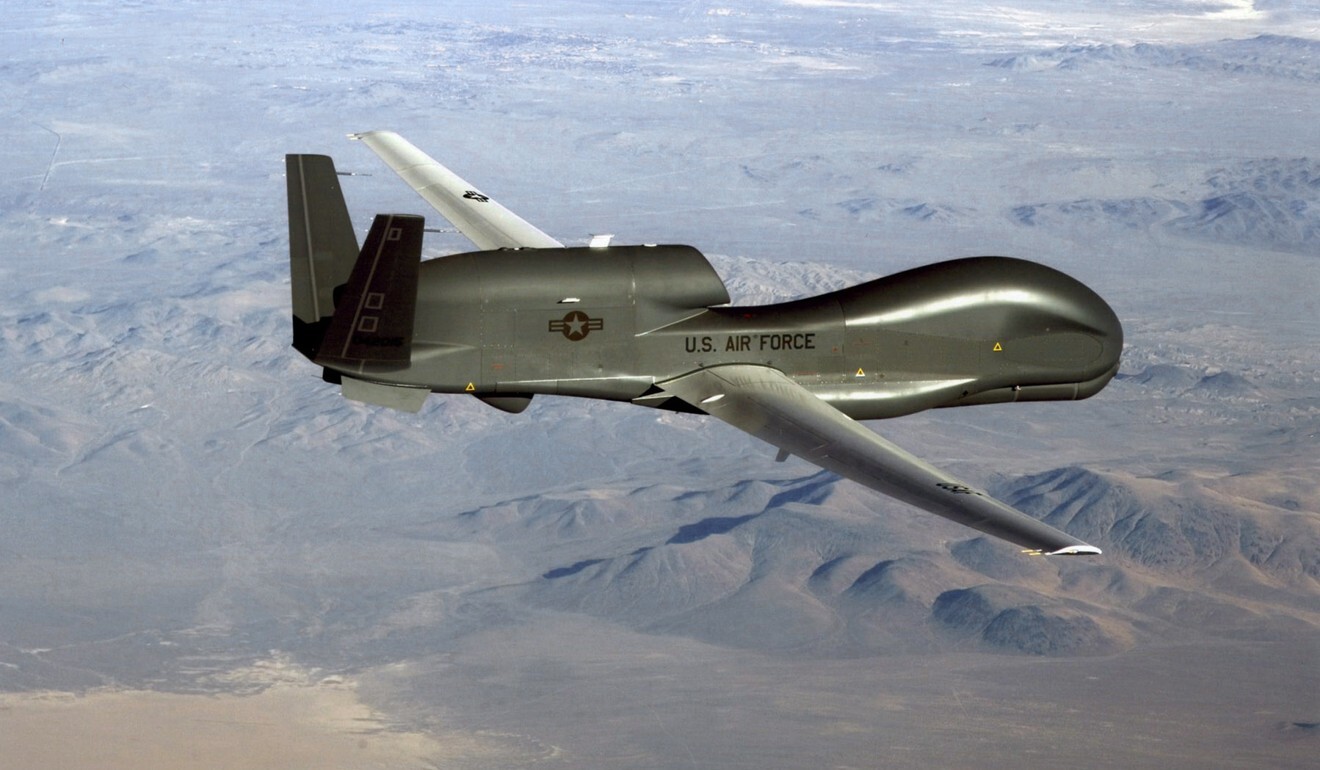
From China to Middle East, drones are increasingly used to attack, spy and kill
- Before drones, a pandemic the scale of the Covid-19 crisis would have halted most combat operations
- But unmanned aerial vehicles can now allow states to deploy attacks or carry out surveillance from the other side of the world
Despite the failed promise of remotely-operated ground vehicles delivering our daily groceries, their aerial counterparts are gaining popularity and government support by the day.
But while civilian drones’ applications in the struggle against the pandemic are in their beta version, their military counterparts are well ahead of the curve, and have ushered in a new era of remote-controlled conflicts.
From Yemen to Libya and Syria, warring parties continue to resist calls for a truce, and the role of armed UAVs is on the rise.
From Afghanistan to Yemen, the unmistakable buzz of a drone is the foreboding soundtrack of a missile strike. In these regions, the unnerving sound is already a source of post-traumatic stress disorder among civilians, especially the young.
Despite the recent unilateral call by Saudi Arabia for a ceasefire in Yemen, Houthi drones are still being used as flying bombs against the Riyadh-led coalition.

Turkish operations in Idlib were largely carried out via drones, whether swarm attacks, jamming missions against pro-Assad air defences, or targeting for precision artillery strikes.
Before drones, a pandemic on the scale of today’s outbreak would have halted most combat operations because warfighters’ capabilities and logistics networks would be disrupted.

Indeed, Covid-19 has rendered the most visible symbols of military might in the world – American nuclear-powered aircraft carriers – impotent. The coronavirus has grounded the USS Theodore Roosevelt and the USS Ronald Reagan. Both vessels are docked in port in Guam and Japan, respectively, silent witness to the inability of the US Navy to project power in the Western Pacific.
Elsewhere, flesh-and-bone soldiers are unable to even conduct basic military training. Drones, however, continue to buzz over conflict-ridden areas.
For now, humans are still in the decision-making loop in terms of both target acquisition and issuing kill orders. But soon, loitering munitions (better known as suicide drones) will be able to fly and independently engage a target. Drones have allowed killing to continue, even as populations, businesses, and other human activity has ground to a halt.
While the path to fully AI-automated weapon systems that do not require human intervention is still hampered by technical problems and ethical constraints, the employment of remote-controlled weapons systems that require a small crew to deploy swarms of hundreds of attack vehicles is already a reality.
Drone pilots are accustomed to controlling armed UAVs located on the other side of the world. Safe-distancing requirements do not get much better than remote operators stationed in air-conditioned hi-tech containers close to home.
Submersible drones that are already patrolling the contested East China Sea or the Persian Gulf are proving a viable alternative to the cramped spaces that submarine crews have to put up with on missions. While social distancing on vessels is a daunting task, on submarines it is almost impossible – sleeping quarters often require “hot bunking”, when sailors due for duty leave their beds for shipmates who are calling it a day.

In this respect, submersible drones are an increasingly important variable in the automated warfare equation. The commonly-shared perception that a drone refers to a remotely-operated flying vehicle ignores the increasing use of them underwater.
Unmanned submersibles cruising silently through the East China Sea, the Malacca Strait or the Gulf of Oman and Aden are the tip of the iceberg in maritime military intelligence. Their roles range from mapping submarines’ routes to scouting foreign ports, but these will change, just as their flying cousins began life as observation platforms until someone decided it would be a good idea to attach Hellfire missiles under their wings.
The submersible drones’ evolution from surveillance and reconnaissance to kinetic roles is going to be accelerated by restraints placed on conventional navy ops by Covid-19. These developments are not only set to complicate the already strained relations between China and the US on navigation rights and territorial claims, but are also going to embolden regional powers and their proxies as they jockey for position in maritime lanes of communication.
The West is following China’s lead in one aspect of drone utility: a tool for surveillance of the population, whether for fever scanning, contact-tracing or crowd mapping. The thermal sensors and high-definition cameras already used on military drones are perfectly engineered for such tasks. The next step is payload delivery – perhaps for disinfectant.
The race is now on to see if drones can be as good at saving lives as they are at ending them. But after Covid-19 has passed, the interest in civilian applications for UAVs may fade. Sadly, there is a parallel for comparison. Years ago, online retail giants envisioned a future in which drones were a fixture in the skies above us. That has not come to pass – except in conflict zones, where it is already a reality.
Dr Alessandro Arduino, the author of China’s Private Army and expert on lethal autonomous weapons systems, is Principal Research Fellow at the Middle East Institute at the National University of Singapore.
Help us understand what you are interested in so that we can improve SCMP and provide a better experience for you. We would like to invite you to take this five-minute survey on how you engage with SCMP and the news.


